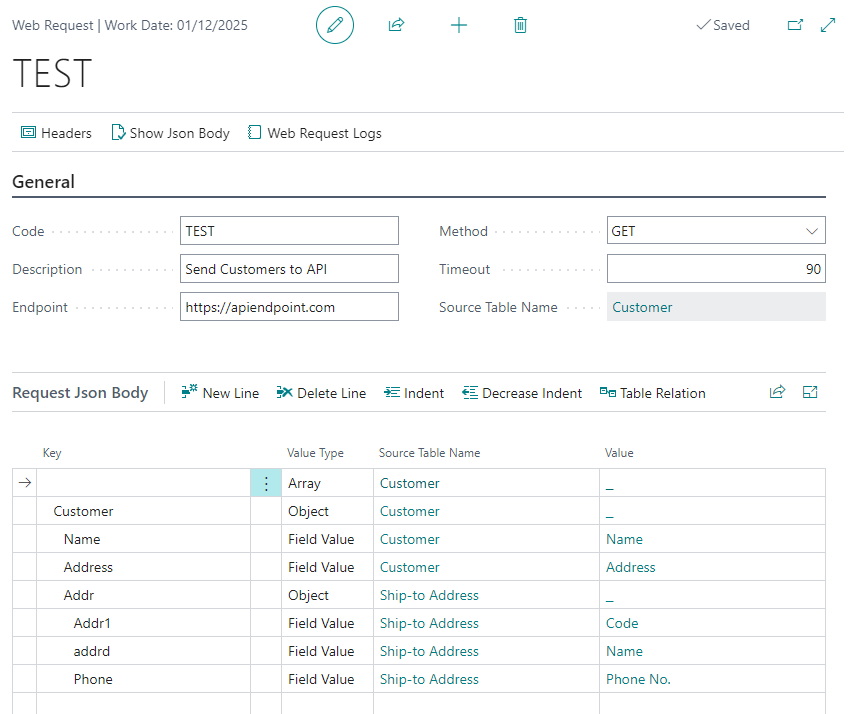Rest API Integrator
Seamless REST API integration for Dynamics 365 Business Central - no coding required.
Overview
The Rest API Integrator empowers organisations using Business Central to effortlessly connect with any external REST API - whether simple or complex - all without developer involvement. Say goodbye to lengthy and costly custom integration projects. With the Rest API Integrator, configuration is in your hands, backed by expert training and support from ERP Ware.
Key Benefits
- Fully no-code configuration: Define multiple tables per request, map fields as needed, and customize authentication types - all via an intuitive client.
- Multi-entity support: Send data from several related tables in one go, simplifying integration flows and reducing overhead.
- Built-in transparency: The Web Request Log captures outgoing requests and incoming responses, offering full visibility and easy troubleshooting.
Why Choose This App
- Accelerate your roll-out: No waiting for development - get your integrations live fast.
- Reduce reliance on IT: Business users and functional consultants can configure and manage API connections directly.
- Gain complete auditability: Understand what data is sent, when it's sent, and how external systems respond.
Perfect For
- Businesses looking to automate data exchange between Business Central and external systems (e.g., CRMs, e-commerce platforms, logistic systems).
- Organisations wanting efficient, scalable REST integrations without the normal heavy investment in custom development.
Additional Resources
- Browse other Dynammics Connect offerings, such as Adyen Payment By Link or Project Forecasting, which enables sending payment requests via email directly from Business Central and forecasting resources for projects with reporting against actual entries.
App Setup
Requests start in “Web Request Queue” where source table with filters can be defined which allows to create one request per record. If no table is defined then single request will be made based on web request parameters.

Continuing to web request you will also find source table which allows to create an array of records in single request. If Web Request Queue had table defined, then single record is already passed.
On Request Body you can define Json Object by setting value type and mapping it to specific table field.
Related tables need to be idented and have table relation defined.
Show Json Body function will generate json based on Request Json Body and pop up as a message for you to preview which is useful for setting it up.

Headers can be defined in header section:


Web Request log will save request and response which can be viewed from related actions.

